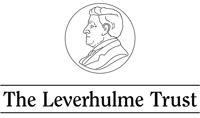Background
Slugs are part of everyday life in Britain and Ireland - literally wildlife on our doorsteps. Thanks to our climate, landscape and history a large number of slug species thrive here. Some are part of our native biodiversity; others have been accidentally introduced from overseas. Some of our native species have been introduced to other parts of the world. A few species are well-known plant pests, but the others play a less widely-appreciated variety of ecological roles. Despite their sometimes humble appearance they are thus an important part of our natural heritage.
Slugs have a reputation for being difficult to identify, partly due to the very variable appearance of some species. Identification guides can make this crucial task a lot easier. Since the last comprehensive guide to British slugs was published 30 years ago (Cameron et al., 1983), much has changed. More has been learnt about the identity, biology and evolution of the species concerned. There is evidence that additional species have become established here while the distribution of others has changed radically. There were also several uncertainties about the identity and relationships of some species to their counterparts overseas.
Aims
The project had two main aims:
- To produce a brand new comprehensive identification guide to the slug species of Britain and Ireland.
- To take advantage of molecular genetic (DNA sequencing) techniques to screen the slug fauna for additional species and to address current uncertainties by testing taxonomic hypotheses.
Methods
 Slugs were collected from over 200 sites across Britain and Ireland.
Slugs were collected from over 200 sites across Britain and Ireland.A modern slug collection was fundamental for this project. To achieve our aims we needed to find and photograph live slugs of each species from across Britain and Ireland (preserved slugs look very different). Taking standardised photographs of crawling slugs is not quite as simple as it might seem! Our sites were in all types of habitats from relatively natural (e.g. National Nature Reserves) to highly disturbed (e.g. inner city allotments).
Before the photographs could be used in the identification guide, each specimen needed to be preserved, dissected and compared to the results of other studies including populations from overseas. As part of this verification process, we also sequenced DNA from the photographed and other specimens to compared it to sequences from elsewhere.
To ensure the identification guide was effective and user-friendly, both new and experienced users were asked to help test the identification keys at workshops and through the Field Studies Council’s AIDGAP programme.
Results
The findings of the research were more dramatic than we had expected. They are summarised in a research paper (see Publications). As a result, updates are needed to the species list of slugs in Britain and Ireland as a result. The results should settle some questions about British and Irish slugs, but have raised a number of others that would need to be addressed by further research.
We have presented the results of the project to the public, naturalists, and other researchers through workshops, talks, field trips and at conferences.
Our identification guide (see Publications) accommodates the results of the research. We hope it will be found even more useful and relevant as a result.

Acknowledgements
We are grateful to everyone who contributed specimens or otherwise helped with this project. The research was funded by a grant from the Leverhulme Trust (RPG-068, 2011-2013).






